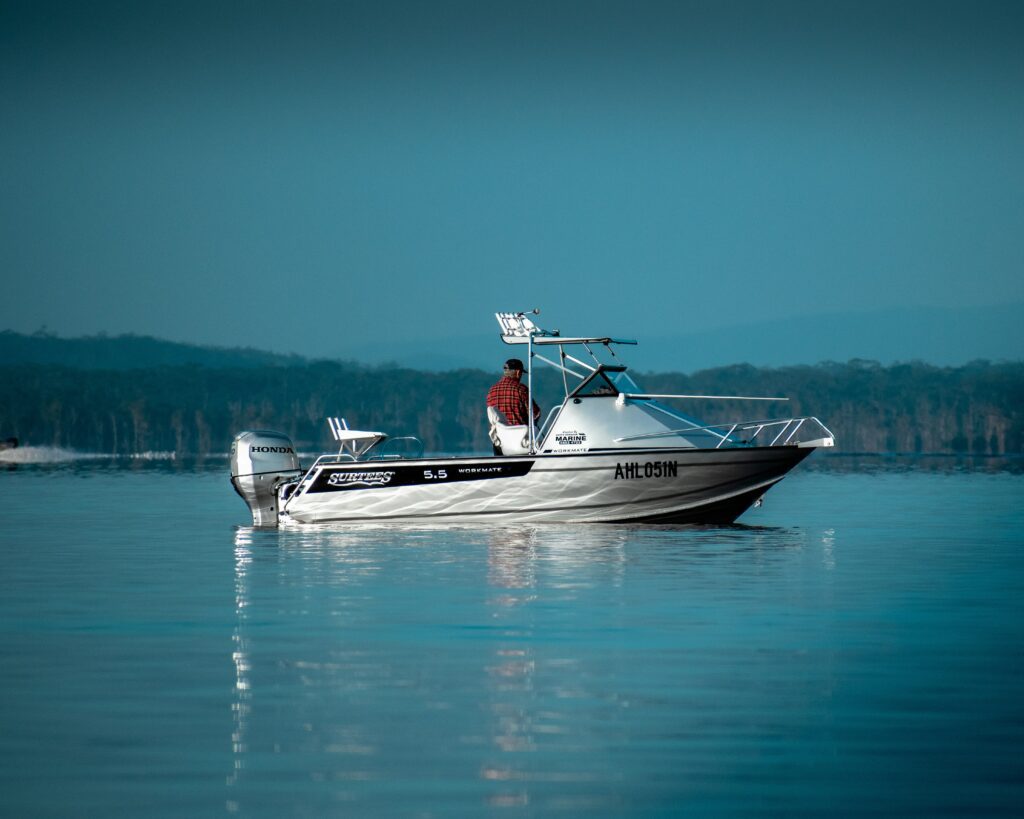Maintaining the bellows on a boat is crucial; it’s not just about saving a trip to the mechanic but also about preventing small issues from snowballing into costly disasters. Think of the engine as the heart of your boat and the bellows as its protective layer — these unsung heroes shield the engine from water, preserving the life and performance of your pride and joy. Like any guardian, bellows age and wear out, and it’s your job to keep an eye on them to ensure they continue to protect your vessel from taking on water — because nobody wants their boating day to end with a sunken ship!
Regular care and a bit of troubleshooting are all it takes to keep your boat afloat and zooming along. Whether navigating the thrill of open waters or enjoying a calm day out, the integrity of your boat’s internal systems, such as the bellows, plays a pivotal role. Let’s keep that engine dry and the adventure high by honing in on the signs of wear and implementing some preventive TLC. Remember, some maintenance goes a long way in keeping your boating days stress-free and fun-filled.
Key Takeaways
- Keep your boat’s engine running smoothly by regularly checking and maintaining the bellows.
- Recognizing the signs of wear can prevent water damage and save your boat from potentially sinking.
- Simple preventive maintenance can extend the life of your bellows and ensure your boating adventures continue without a hitch.
Boat Bellows: Vital for Engine Protection

Have you ever wondered what keeps your boat’s engine safe from water intrusion? Bellows are your unsung heroes. Imagine them as robust rubber boots cradling the lower drive of your engine, essential for those stern drives where the inboard engine meets the outboard drive. These aren’t your average components; they’re specifically designed for stern drives, not for standard inboard or outboard motors.
Here’s what makes the bellows so crucial:
- Flexibility: Like an accordion, they expand and contract, ensuring a snug fit around vulnerable parts.
- Protection: They seal exhaust systems and U-joints and shift cables from water, which is crucial for your boat’s open-cooling system.
- Durability: Treated with pesticides, they’re less tempting to marine critters that might fancy a nibble.
So, if you’re keeping your vessel in a wet slip, remember that these bellows safeguard important areas from potential damage. Keep an eye on them; they’re a simple yet important line of defense for your boating adventures.
Identifying Issues with Your Boat’s Bellows
Is your boat acting up lately? Maybe you’ve found water where it shouldn’t be or heard some concerning noises. It’s quite possible that your bellows—the vital, flexible seals protecting the stern drive’s moving parts—need attention.
Quick Checks for Bellow Problems:
- Water Presence: Notice any unwanted water in your cabin? It could be a sign of bellows failure.
- Shifting Troubles: Difficulty shifting could point towards an issue with the shift cable protected by bellows.
- Unusual Sounds: Are you hearing noises when powering your boat? It might be indicating bellows in distress.
- Elevated Temperatures: If your boat is overheating, don’t overlook the bellows as potential culprits.
When inspecting:
- Drive Positioning: To see better, turn the drives sideways and investigate.
- Physical Inspection: Examine for any apparent signs of wear, such as cracking or rusting, especially around folded areas.
- U-Joints and Output Shaft: Check these areas for rust, as it hints at water ingress causing corrosion.
Remember to peek at your user manual for specifics on how to approach this task, or better yet, have a pro take a look if you’re unsure. Don’t let those bellow woes turn into a sinking feeling—catch the leaks and creaks before they become a serious headache!
Boat Bellow Rejuvenation

Stage One: Detaching the Drive
Let’s start by safely unhooking your boat’s drive:
- Shift it into the right gear: This depends if you’ve got a right or left-hand drive. Easy, right?
- Remove the drive: Loosen the bolts and pull the housing off. Remember, no rush—take care of your back (and your boat)!
- Keep track of the little bits: Specifically, the cable end and straight-threaded rod. You’ll thank yourself later.
Stage Two: Fresh Exhaust Bellows
Now, the exhaust bellows—think of them as the boat’s lungs, keeping water away from the exhaust system:
- Out with the old: Loosen the clamps and gently cut away the old bellow. Be careful, though—there is no need to give your boat an unwanted scratch!
- Clean and prep: Wipe down those mounting surfaces.
- In with the new: Slide on that fresh bellow, secure the clamp, and voila!
Stage Three: U-Joint Bellows Swap
Protecting the gimbal bearing and U-joint from the elements is crucial:
- Hinge pin wrangling: Pull those pesky pins to tilt out the bell housing.
- Bellow removal: Out with the old and ready for the new.
- The perfect fit: Make sure the new bellow is snug and sealed. Don’t skimp on the adhesive here!
Stage Four: Shift Cable Bellow Switch
Last but not least, the shift cable bellow:
- Loosen the grips: Off with the old clamp, and clear out any debris.
- A sweet install: Carefully attach the new bellow, align it exactly, and secure it with your heart and soul. Well, and the clamp!
Remember, each step should be done methodically. And don’t ever hesitate to call in a pro if things start to look dicey. Your boat deserves the best treatment, so let’s keep it in tip-top shape, shall we? Now go, give those bellows the love they need!
Maintenance & Preventing Problems with Bellows

Caring for the bellows on your boat isn’t just a good practice—it’s essential for keeping the adventurous sails smooth and safe. Think of bellows as the unsung heroes guarding the engine’s cozy nook against the uninvited waters. Let’s chart the course for their upkeep:
- Annual Inspections: Like a yearly check-up for good health, give your bellows a thorough look each season. Spotting early signs of wear, like a loss of that crucial flexibility, is key.
- Wear and Tear: Keep an eye out for any cracks or degradation. It’s like checking your favorite pair of boots for leaks—nobody wants wet feet, much less a swamped engine!
- U-joint & Output Shaft Check: Peek the bearings and shafts for telltale rust. It’s like finding crumbs on the sofa—clear evidence that something or someone (ahem, water) has breached the perimeter.
- Routine Replacement: Mark your calendar—every couple of years or at the first hint of damage, consider replacing the bellows. It’s a bit like swapping out your toothbrush; you just know when it’s time.
- Expert Eyes: If you’re feeling uneasy or unsure, bring in the pros. They’re like savvy guides in the wilderness, leading you to safe and sure maintenance.
Remember, caring for your bellows is synonymous with sailing serenely. So apply that lubricant, check those o-rings, and keep those gaskets happily flexible. Your boat—and peace of mind—will thank you for it!
Frequently Asked Questions
Identifying When Your Boat’s Bellows Need a Swap
Wondering when to give your boat’s bellows the boot? Keep your eyes peeled for a few telltale signs. If you notice any cracking, dry rot, or visible wear on the bellows, it’s time to change. Hearing any unusual sounds originating from the bellows area during operation is like your boat crying out for help — better answer that call!
Signs Your Boat’s Bellows Are Leaking and the Potential Risks
Leaks in your boat’s bellows are no joke. Spot the clues before they spell trouble:
- Unwanted Puddles: Water where it shouldn’t be? Suspect those bellows first.
- Auditory Alerts: Strange noises could herald a bellow betrayal.
Leaky bellows aren’t to be taken lightly; they can cause significant damage to your boat’s internal systems if ignored.
Bellows Repairs and Replacement: What’s the Price Tag?
Fixing or replacing bellows won’t break the bank, but it’s not couch change, either. Costs can vary, but ballpark figures fall between $20 to $400, influenced by boat type and labor fees. Remember, going DIY might save some cash, but proceed with caution; a professional touch might ultimately save money in the long run.
The Optimal Bellows Replacement Timeline for Seasafe Voyages
Safety-savvy sailors swap out their bellows every 3-5 years. Like clockwork, this routine care prevents the sneaky slide into costly repairs. Mark your calendar or set a reminder to avoid being caught off guard by bellow failures.
Exhaust Bellows Woes: Can They Lead Your Boat to Davy Jones’ Locker?
Might a busted exhaust bellows send your vessel to a watery grave? Not typically, but it’s still serious business. A failed exhaust bellow can allow water to back up into the engine, potentially causing engine damage and loss of propulsion – not sinking per se, but still something you’d want to avoid!
The Nitty-Gritty of Bellows Fix-Up or Switch-Up
Ready to tackle bellows repair or replacement? Here’s what you’ll dive into:
- Inspection: Assess the condition of your bellows.
- Removal: Take out the old bellows with care.
- Installation: Fit the new bellows, ensuring a snug and secure placement.
- Testing: Run a thorough check to ensure everything works seamlessly.
Remember to consult your manual or leave it to the pros, especially if you’re uncomfortable tinkering with your vessel’s innards.






